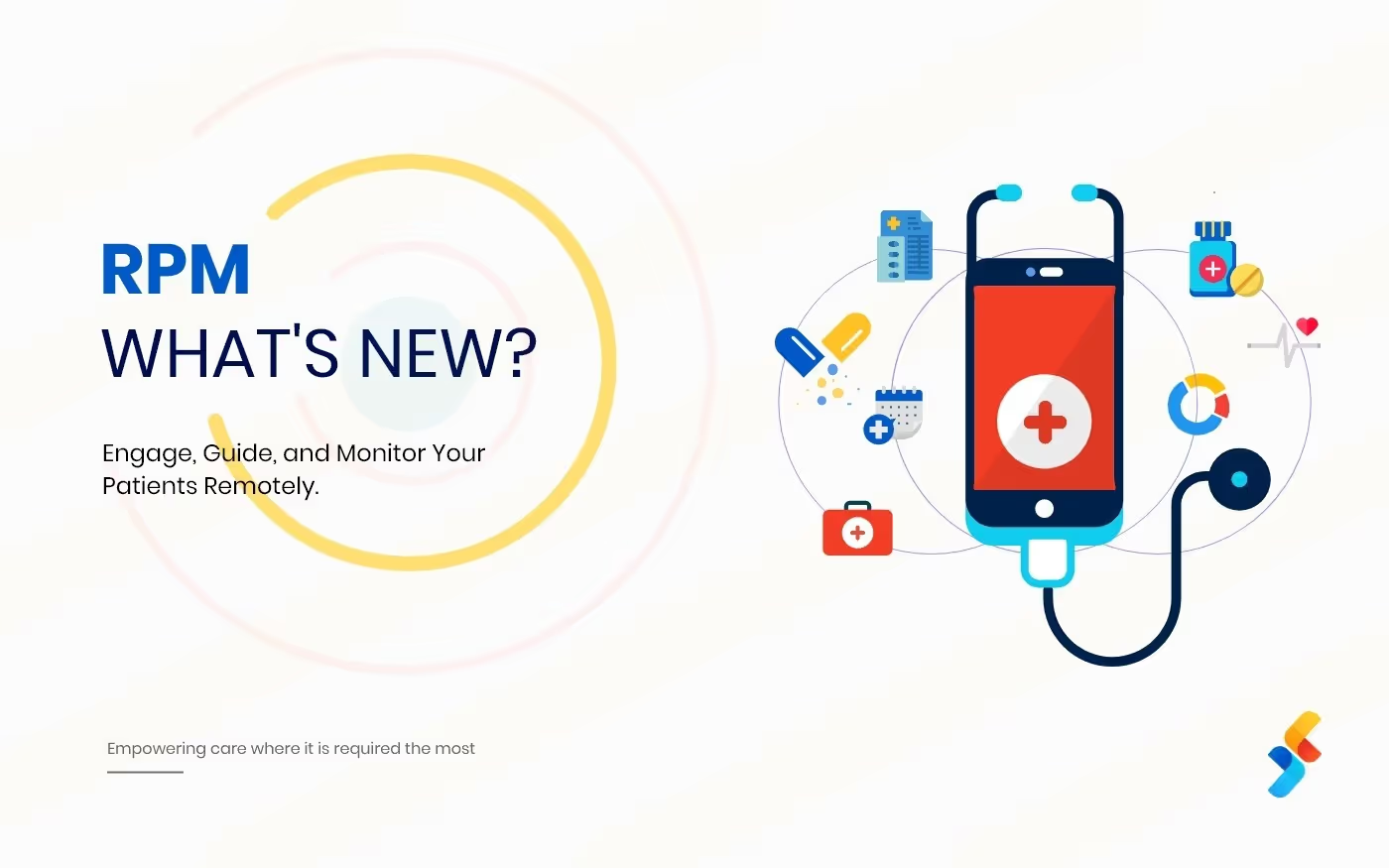According to a study, by the end of 2023, the remote patient monitoring market is likely to earn more than $31.3 Billion. There are nearly 2000 healthcare organizations that use mobile applications to leverage RPM services seamlessly. Additionally, around 85% of the healthcare experts and care providers are investing massively in the RPM technology.
Trending and innovative digital technologies have enabled unique and robust ways of practicing patients care in the healthcare industry. Healthcare professionals across the globe are putting their best efforts to integrate such evolving technologies in Remote Patient Monitoring to seamlessly track and treat their patients effectively. Often termed as RPM, Remote Patient Monitoring is an extraordinary method of healthcare delivery that utilizes the modern advancements in the world of information technology to assemble the patient’s data.
For a few years, the RPM has attained a massive increase in its usage as the hospitals and care experts are exploring new ways to manage a quickly aging population with complicated chronic health requirements.
To encourage effective and holistic care management including the beneficiaries with a single chronic condition, CMS introduced CPT Codes. These codes are focused on the healthcare professionals who care for the patient’s unique health conditions and can be billed by any qualified care expert or trained healthcare expert who satisfies the code requirements.
In the year 2017, CMS (Centre for Medicare and Medicaid Services) published a 2-year study that sufficiently described how the program increased patient awareness and decreased hospital readmissions. The study proved to be a crucial part of the CCM (Chronic Care Management) program and it effectively helped the CMS to realize the value of RPM and hence they decided to make the services more accessible and flexible.
Later in 2018, CMS released CPT code 99091, a billing code for RPM reimbursements. The CPT code 99091 covered the entire explanations and collections of the physiological data, this data helped the care experts in enabling the payment process. The code includes neither the equipment set up cost nor the cost of the devices required to train patients. Additionally, it was mandatory for healthcare experts to give a minimum of 30 minutes to the patients regularly.
To overcome the costing involved in the equipment set up of medical devices and for training the patients. CMS modified the Medicare Physician Fee Schedule (PFS) 2019 to added three brand new CPT codes for RPM reimbursement.
An overview of the new CPT codes
Through new CPT codes, healthcare experts have hugely incentivized providers to deploy remote patient monitoring effectively. The new codes have brought some relief for the physicians and other healthcare experts as they are no longer responsible for managing the programs solely, instead, the Medicare will pay for the initial equipment setup, the devices required for patient’s education, and ongoing management of remote monitoring programs. This hugely benefitted the healthcare experts and care provides as they can now increase their revenue without hiking the patient population. The new Chronic Care Remote Physiologic Monitoring codes are as follows:
CPT Code 99453 (Patient’s Education and Equipment Setup)
It includes initial patient training and setup. This is a onetime billing process per episode of care that stretches to 16 days of duration.
CPT Code 99454 (Kit Supply and Program Monitoring)
16 days of remote monitoring of physiologic parameters including respiratory flow, blood pressure, weight check, etc. Additionally, including the supply of RPM kit that is capable of at least daily recordings, programmed transmissions, and notifications. This is billed once per 30days with a minimum duration of 16 days as an episode of care.
CPT Code 99457 (Initial 20 minutes of Duration Tracking)
This code demonstrates that the first 20 minutes of the monitoring period of the clinical staff and other healthcare experts are within a calendar month requiring flexible communication with the patient. This is billed once per 30 days of duration.
The Essential Requirements for CMS Reimbursements
To qualify for CMS reimbursements for utilizing the RPM services efficiently, the service providers and hospitals need to ensure the following:
- Medicare part B patients are imposed 20% of copayment (renouncing the copayments regularly can trigger penalties under the Federal Civil Monetary Penalties Law and also the Anti-Kickback Statute)
- Patients must take the remote monitoring services and are required to monitor for a minimum of 16 days to be applicable for a billing period.
- The RPM services must be ordered by skilled physicians or other qualified healthcare experts.
- Data must be wirelessly synced for proper evaluation, analysis and treatment.
Conclusion
According to CMS, the new CPT codes reflects a wider admin strategy to create a healthcare environment that is efficiently accessible, affordable, standard, empowered with technologies, and innovative. Additionally, healthcare experts and the patients can stay connected, organizations can get paid for utilizing the trending technologies and reduces the chances of hospitalization by tracking the patient's health without increasing the prices.
About the Author
Aashna Diwan is a technophile who creates innovative insights about next-gen technologies like AI, ML, Blockchain, ERP, Cloud, AR/VR, IoT, and many more.
.avif)










.jpg)









